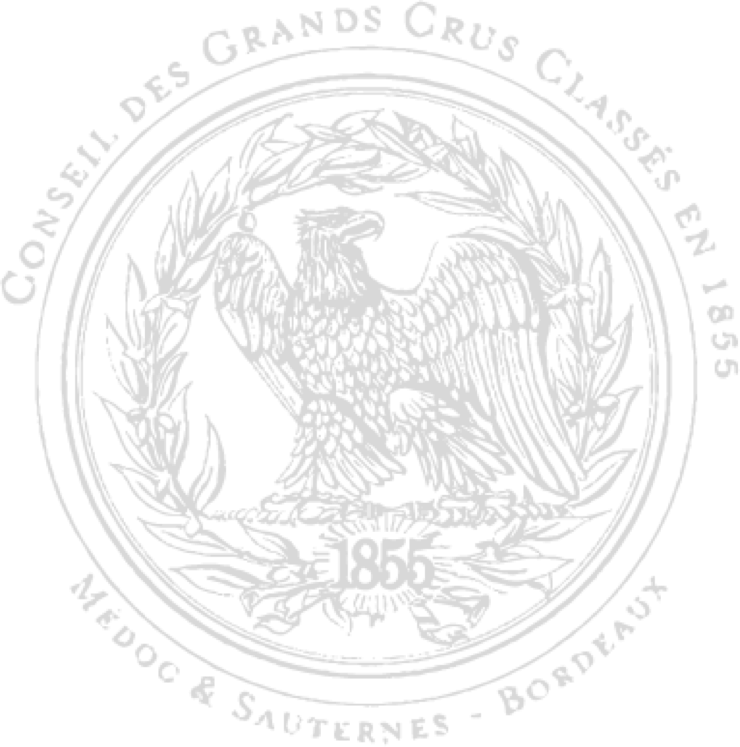Sauternes and Barsac :
Les Grands Crus Classés
BY CLAUDE PEYROUTET
 Sauternes, the highly prestigious sweet white wine, is produced 40 km upstream of Bordeaux in a region nestling between the left bank of the Garonne river and the immense Landes forest. This noble area of about 2,200 hectares is divided among the villages of Sauternes, Bommes, Fargues, Preignac and Barsac. Although they can all properly claim the famous Sauternes appellation, producers in Barsac can choose between the Sauternes A.O.C. and its sister appellation, Barsac A.O.C., which controls production in a very similar manner.
Sauternes, the highly prestigious sweet white wine, is produced 40 km upstream of Bordeaux in a region nestling between the left bank of the Garonne river and the immense Landes forest. This noble area of about 2,200 hectares is divided among the villages of Sauternes, Bommes, Fargues, Preignac and Barsac. Although they can all properly claim the famous Sauternes appellation, producers in Barsac can choose between the Sauternes A.O.C. and its sister appellation, Barsac A.O.C., which controls production in a very similar manner.
“Often imitated, the quintessential character of these wines can never be rivalled. Winegrowers, who produce incredibly low yields, are proud of their region’s special identity, even if this means paying a heavy tribute to the capricious microclimate which is responsible for the famous noble rot.
The 26 Sauternes and Barsac great growths, as classified at the 1855 Universal Exhibition in Paris, are the region’s finest wines. For 140 years their successive owners, conscious of their responsabilities, have skilfully perfected these legendary, yet unpredictable elixirs. Their fine qualities may be appreciated unaccompanied, or with food, producing some of the most surprising combinations.”
Great growths, great dishes : Epicure an combinations
Of course a Sauternes or Barsac great growth can be tasted on its own. Their character and opulence are such that they do not necessarily require any accompaniment. Such pleasures have been enjoyed for a long time by our northern neighbours, at the end of a cold winter’s afternoon in England, Sweden or Germany – as well as in the summer under the arbour or in the summerhouse.
Certain critics grumble that this is the only way to appreciate these great sweet wines: their extreme sweetness makes them incompatible with most food combinations. Nowadays, these dubious beliefs, which seem like unfounded prejudice, have been demolished by a number of faithful wine lovers and creative chefs. They do not advocate just any old combination but have carried out research into blends, using the principles of taste physiology, and following a study of exotic culinary traditions which, for centuries, have combined spices and sugars, poultry and sweet wines, cereals and fruits, almonds and bitter oranges. Two principal types of association stand out based on contrast; where the opposing ingredients of a dish and a wine mingle in a dialectic of pleasure, or complementary harmony when ingredients from the same family are brought together sweet plus sweet, fruity plus fruity. In both cases, all of the ingredients are involved in the synergy.
Starting a meal with melon, for its fruity freshness, is an invitation to open a bottle of a great growth. The fruit brings out the fruit in the wine and the wine is enhanced by its modest partner. The combination is classic and refreshing. With foie gras, the exception seems to prove the rule since, normally, fat needs to be set off by the acidity of a dry white wine. However, whether the liver is served cold or warm, alone or with grapes and apples, it readily accompanies a sweet wine. Therefore the only risk taken is in the formidable addition of fat + fat. The success of this extraordinary combination is due to the subtle presence of the sugar in the wine and the salt in the liver counterbalancing each other. At the same time, the acidity of the wine, which is hardly noticeable but actually very much in evidence, is enhanced by the salt and the fat in the liver. In a way it is a Chinese style marriage of: salt + sugar + acid +fat! In certain cases, the delicate bitterness of the wine echoes that of the liver, especially if the latter had been left to age slightly.
Citing foie gras automatically encourages gourmets. Equally though, try a Sauternes with a quiche, its smoked taste will complement the toasty aromas of the wine, or even with quenelles of pike and a nantua sauce. Very impressive! So long as the ingredients are spicy and part of a refined cuisine (excluding grilled dishes) lobster, crab, crayfish or shrimp can bring out the best in a very old Barsac or Sauternes.
Try mussel vol-au-vents, oyster ravioli with curry sauce, scallops with endives, or sweetbreads which several great chefs of the Gironde serve with great growths that have reached a respectable age.
The possibilities are endless. In the last decade, both French and international cuisine have revived fish and Sauternes combinations. As long as the former are not fatty, and are cooked in a mousseline, Hollandaise, Normandy, or American sauce, and that the spices are used expertly, these dishes can be excellent. For these delicate combinations, noble fish such as sole, turbot, monkfish and bass are wonderful.
With poultry, red wine may seem ideal. However, in the Sauternes region, we have known for a long time that a sweet white wine goes very well with a simple roast chicken or a chicken with garlic because, as it caramelizes, it brings out the flavours of the noble rot. Poultry flesh is often lean, despite the richness acquired in the cooking. It therefore goes admirably with a well structured white wine that has a balanced mellowness and an appealing bouquet. This is even more true with Chinese or New Orleans style poultry. On a more sophisticated level, you must try “poularde en vessie”, with a slight truffle flavour, or duck with fruits: cherry, peach, grape, or orange. It is delicious. As for duck fillet, the flavours of mushroom, subtle truffles, cream of garlic and foie gras mean that a sweet wine is an ideal accompaniment. Duck fillets may also be prepared with cherries, pears or…Sauternes. Because a white wine calls for a white dish, overcome ridiculous conventions and try dishes proposed by “nouveaux” chefs. Dare to taste a Sauternes or Barsac with some white meat. Pork is fine too, cooked with fruit or an Asiatic recipe: spices, fruits, and sweet-sour flavours prepare your tastebuds for the combination. By analogy in similar circumstances, veal goes well with milder flavours or contrasts. Vegetables also have a role to play. Vegetarian cookery readily involves Sauternes. Courgette and aubergine for example in an almost caramelized dish are really delightful Or combine them with cereals and cheese. Why not try a young sweet wine ?
Return to more traditional combinations with blue cheeses such as Bleu d’Auvergne or Roquefort. These cheeses contain the four basic tastes, and blend sumptuously with great growth sweet white wines. Other harmonious associations are forgotten all too often: with Maroilles or Munster cheeses, meat pies or with sheep’s cheese from France or elsewhere. A big advantage of drinking Sauternes with cheese is that a bottle opened for this occasion can then be served with the sweet course. Be careful though, not just any dessert will complement a good Sauternes; choose slightly acid fruits, such as strawberries, or mixed fruit salads with red berries, kiwis, oranges, etc. Following the same logic, the great growths go well with all fruit tarts, apple upside-down cake, or “tarte Bourdaloue”. Avoid chocolate, although dry pastries, particularly almond combinations can work well. Simpler associations are with pancakes, waffles and French toast.”
Claude PEYROUTET, for many years a teacher of preparatory classes for the Bordeaux-Blanquefort Wine School, is also a wine writer who is passionately interested in Sauternes. He is the author of “Le Livre du Vin” and “Le Grand Livre du Bordeaux” published by Solar, “Les Vin Blancs” published by Bordas and “Les Vins de France”, written under the symbolic pseudonym of Claude Carmenère, published by Nathan.

 Sauternes was predestined to be a wine-producing area. This can partly be explained by the geological composition of the two, very different areas which make up the region. On the right bank af the Ciron river, a tributary of the Garonne, the villages of Preignac, Fargues, Sauternes and Bommes, which constitute the Sauternes appellation, lie on an east-facing plateau. The substratum of this plateau is shell limestone, marl or argillaceous sand, all dating from the tertiary era. During the quatenary ice ages, this substratum was covered with enormous layers of gravel carried by the Garonne river or rather the Garonnes, since over the years the river has successively occupied several beds, moving from west to east. Recent scientific findings have indicated that the Garonne used to be a network of meandering channels, hence the creation of the vast fluvial terraces on the rectilinear banks and the deposits on the concave sides of the river or along the river bed. As the climate warmed, the glaciers melted and the sea level rose, slowing down the current of the river and allowing alluviae to settle. When the next ice age arrived, the sea level fell, the river flowed more rapidly and fresh new beds were uncovered. This explains the layering of the terraces and their geological complexity. The highest and oldest terraces lie to the west, the lowest to the east.
Sauternes was predestined to be a wine-producing area. This can partly be explained by the geological composition of the two, very different areas which make up the region. On the right bank af the Ciron river, a tributary of the Garonne, the villages of Preignac, Fargues, Sauternes and Bommes, which constitute the Sauternes appellation, lie on an east-facing plateau. The substratum of this plateau is shell limestone, marl or argillaceous sand, all dating from the tertiary era. During the quatenary ice ages, this substratum was covered with enormous layers of gravel carried by the Garonne river or rather the Garonnes, since over the years the river has successively occupied several beds, moving from west to east. Recent scientific findings have indicated that the Garonne used to be a network of meandering channels, hence the creation of the vast fluvial terraces on the rectilinear banks and the deposits on the concave sides of the river or along the river bed. As the climate warmed, the glaciers melted and the sea level rose, slowing down the current of the river and allowing alluviae to settle. When the next ice age arrived, the sea level fell, the river flowed more rapidly and fresh new beds were uncovered. This explains the layering of the terraces and their geological complexity. The highest and oldest terraces lie to the west, the lowest to the east.